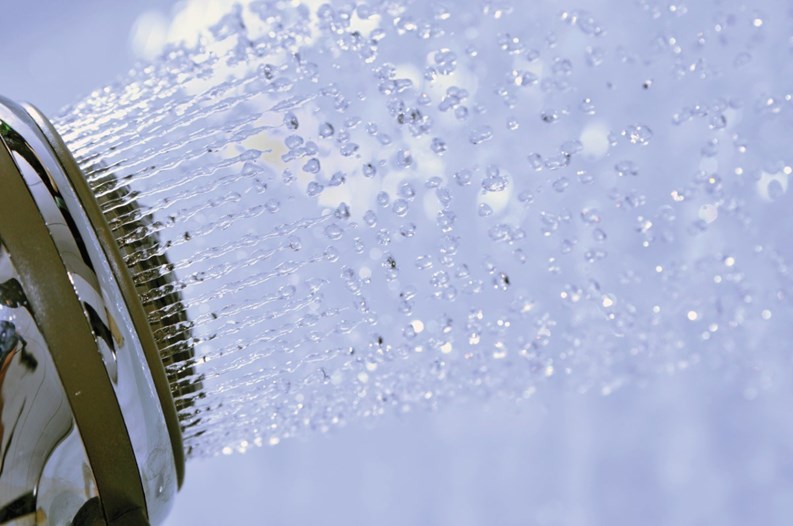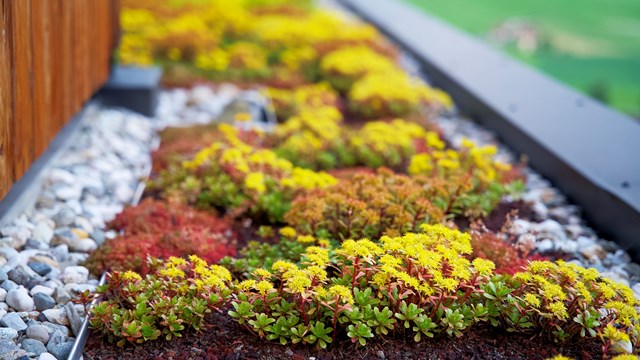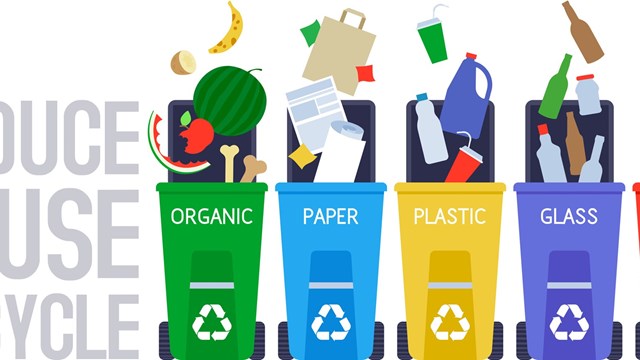We are all feeling it –costs consistently creeping upward, skyrocketing grocery bills, and do we dare discuss what we are dealing with at the pump? What’s next? The sad answer is: Your water bill.
Water, a commodity that most Americans have taken for granted, may be going the way of gas prices. It is estimated that some New England areas will be seeing water bill increases of close to 15% within the next year.
Despite the fact that water is and always has been a limited resource, it has not always been treated or respected as such. With the increase of urban development and the change in weatherpatterns, water shortage is becoming a growing problem for New England condominiums, as seen by a proliferation of water bans and restrictions.
The water shortage boils down to basic economic supply and demand. New England primarily gets its supply of water from reservoirs or aquifers (underground reservoirs or wells), both of which have a limited amount of water that needs to be collected in order to replenish themselves. Yet through urbanization (and “pavescaping” instead of landscaping) we have deprived storm water an avenue to be absorbed into the ground. As cities are continually expanding and increasing in population, so are water usage and abusage on the rise. A decreasing supply of water, combined with increased demand, equals a sizable water bill.
Despite what appears to be a rather bleak situation, water costs and conservationcan be within our control and budgets if we use and conserve our water wisely.
Home Sweet Home
Condo owners interested in tackling water conservation inside their home would be wise to confront the room most responsible for water loss: the bathroom. The American Water Works Association estimates that close to 70% of water use for the average U.S. family goes down the drain in the form of showers, baths, general hygiene and toilet flushing. Simple installation of water-efficient shower heads, faucets and toilets or retrofitting water-saving devices on existing ones (such as toilet tank dams) can reduce your home water consumption by as much as 50%. It is estimated that low-pressure showerheads save between 2 and 4 gallons per minute, faucet aerators save 1.5 gallons per minute, and toilet tankdams save up to 1 gallon per flush!
Reuse of dish, shower, sink, and laundry water (known as “grey water”) is another potential conservation alternative. Grey water comprises the lion’s share of residential "waste" water. The “capturing” of grey water for use would require owners to acquire two separate plumbing systems to separate black water (sewage water from the toilet) from grey water.
Although typically thought best reserved for landscape irrigation, grey water can find uses within the condo itself. Paul Marquis, the education coordinator of NEXUS Green Building Resource Center, suggests that owners interested in grey water options check into a toilet-mounted sink that uses grey water for flushing. Marquis does stress that grey water alternatives within the home have been a hard sell to manyconsumers. “Most cities prohibit it by code and people are nervous about cross-contamination issues,” he says. “It is also the least cost-effective water conservation method.”
Sometimes it is the simple techniques that Grandma taught us about home water conservation that work the best. Topping Grandma’s list would be fixingleaky sinks and faucets. A 1.6mm leak (1/16-inch) can amount to 822 gallons of wasted water a day. Leak-detecting dye tabs can be purchased at hardware stores to spot leak trouble spots. Other simple solutions include turning off the water when you brush your teeth, taking shorter showers and not leaving the water running. All these measures can do wonders for water conservation.
Native is Nicer
Considering that landscapes can consume the bulk of urban water use, and therefore represent one of the principal strains on water conservation, it is no wonder that many condos are using a gardening method called Xeriscaping. Marquis describes Xeriscaping in its simplest terms as “a landscaping technique that takes advantage of native plants.” Marquis adds that plantings are dictated by what grows best in your specific region as well as “what is best suited tominimal precipitation typical to your area.” Sedum (Autumn Joy), Russian Sage, and Lavender, all considered drought-resistant plants, tend to do well across many regions.
The cost of Xeriscaping is comparable to any landscaping budget. As Marquis points out, “in newly constructed buildings, it is a matter of making the right choices. For existing buildings, the cost to retrofit an existing landscape can vary depending on the scale.” Marquis believes that Xeriscaping can work in any setting. “There are so many options and ways to incorporate native plants. There is no question that Xeriscaping is well suited to any style building or setting.” One location that has fully embraced Xeriscaping is Forbes Park/Forbes Lofts, a cutting-edge “green” condo in Chelsea, Massachusetts. John Rasmussen, sales and marketing director for Forbes, stresses the perks both ecologically and cost-effectively. “We have absolutely no irrigation or sprinkler system costs because we have no need for them. All our landscaping is native plants and cansurvive with rainfall alone,” he says.
Every Drop Counts: Water Management
Urban settings are no stranger to storm water problems. In recent years, the city of Boston has been forced to confront this issue head on. Boston's Back Bay section is former swamp landthat was filled in to create buildable terrain. Houses in this section were supported by wood pilings, which remain sound as long as they are submerged in groundwater.
However, due to the alarming drop in groundwater levels – attributed to the lack of storm water management – the pilings are starting to rot, and the city has been forced to establish some strict guidelines. New construction or renovation projects in affected areas arenow required to incorporate systems that, instead of sending storm water down the sewer, will replenish the liquid back into the ground, keeping the groundwater level steady.
Storm water management need not be mandated by the city but can be imposed by condo owners themselves. Basic storm water management follows three general strategies or goals: 1) slow down water flow long enough for water to seep into the ground; 2) retain waterto be evaporated or re-used; and 3) increase water’s ability to be absorbed into ground surfaces.
Approaches used to implement these strategies run the gamut. “Rain barrels are one of the simplest and most cost-effective ways of managing storm waterby using collected rainwater for landscape irrigation,” Marquis explains. Storm water can also be captured on a larger scale such as the aesthetically-pleasing canals at Forbes Lofts. However, because Forbes is not in need of excess water for irrigation, “rain water will be used to supply water for use in the complex’s toilets as well as channeled to rebuild the salt marsh,” Rasmussen explains.
Costs for storm water management vary extensively. A simple rain barrel can be purchased for around $200. The elaborate canal system at Forbes is estimated to come in at $700,000. “It is important to look at not the initial cost, but at the lifecycle cost of storm water management efforts,” Peter Papesch, chair of the Back Bay Green Initiative, stresses. Rasmussen agrees, and adds, “Although we don't have an exact figure on individual watersavings, we do know the average household uses 40% of their water use in their toilets, and ours will be fed by the rain.”
A Roof to Call Your Own
“Green roofs” provide another strategy for storm water management. The Germans have pioneered the environmentally and aesthetically pleasing roof gardens for over 50 years. The United States has been slower to catch on, but we are now coming around. Green roofs can be seen in most major cities –and for good reason. Their long-term advantages can prove to be economically as well as ecologically beneficial.
Green roofs have been found to aid the life span of the underlying roof. They help to prevent heat loss in winter, and unlike traditional roofs, green roofs don’t trap heat from the sun. “Conventional roofs can heat up to as high as 150 degrees. We have made concrete ovens out of our cities,” Karen Weber, co-president of Earth, Our Only Home Inc., states. By maintaining a cooler building in the summer monthsand warmer ones in winter, owners will see reduced energy costs.
Not only do green roofs aid in reducing energy costs, but the benefits to the environment are considerable. At the top of the list is storm water management. “Instead of all the freshwater from rain being lost by running into the sewage systems or bays, a goodpart of that storm water is retained by green roofs,” Weber states.
Within reason, every roof is a candidate for a green roof. Some restrictions do apply, primarily weight limits. A roof must be able to hold 20 pounds per square foot above the snow load. The pitch of the roof also comes into play. The steeper the roof, the lesscost-effective the green roof becomes. Installation costs vary, but average about $15 to $20 per square foot.
The hard sell
Innovative and resourceful water conservation ideas abound. But convincing condo owners of the merits of investing in water conservation measures may be easier said than done. “You cannot force condo owners to take part in water conservation – but you can persuade,” says Papesch. Boards will have an easier time persuading condo owners to make conservation changes if owners embrace a “green” philosophy. Through education and commitment to the idea of water and energy conservation, owners will be more likely to open their wallets. But embracing “green” ideas alone may not loosen those purse strings. Marquis believes that “the bottom line is, you need to look at the bottom line. Illustrate the cost savings. Do the math and translate it into a dollar amount per month or year.” Condo boards can also investigate buying water saving tools and technologies in bulk and passing the cost savings on to owners. “Such things as shower headscan be purchased in large quantities and distributed to condo owners at a reduced cost,” suggests Papesch.
In the long run, condo owners may soon not have the luxury of picking and choosing what water conservationmethods they want to participate in. Forward-thinking condo boards may be wise to put a water conservation plan in place and make the effort to save now rather than paying later, both ecologically and financially.
Hillary Pember is a freelance writer for New England Condominium magazine.







2 Comments
Leave a Comment